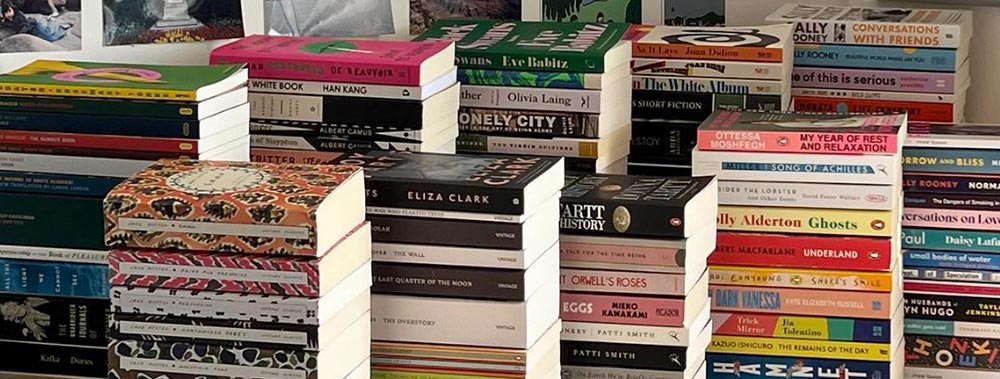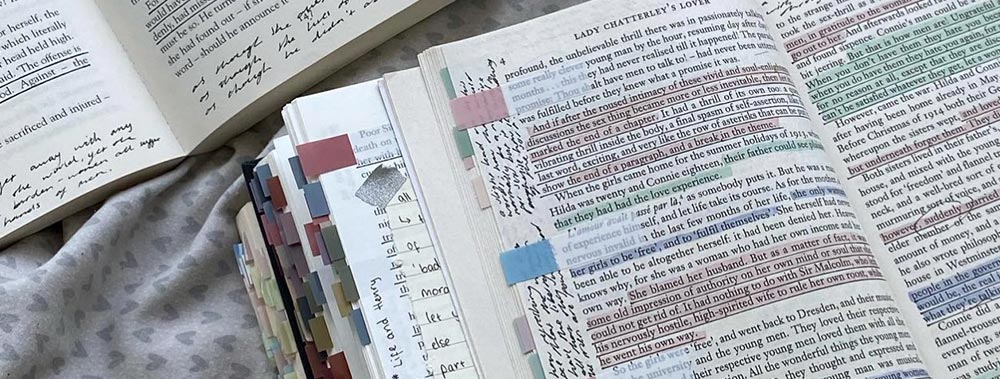Wuthering Heights: Summary, Plot, Characters, Literary Analysis & More
Wuthering Heights is an 1847 novel by Emily Brontë, initially published under her pen name “Ellis Bell”. It concerns two families of the landed gentry, the Earnshaws, and the Lintons, and their intertwined fates set against the backdrop of the stormy moors of Yorkshire.
This captivating narrative revolves around the tempestuous relationship between Catherine Earnshaw and Heathcliff, a mysterious and enigmatic outsider. The story delves into themes of love, passion, revenge, and the haunting consequences of unchecked emotions.
As Catherine marries Edgar Linton, her choice sets off a chain of events that lead to heartbreak, elopements, and familial strife. Heathcliff’s obsession with Catherine and his desire for revenge drives the plot forward, while secondary characters like Nelly Dean provide crucial perspectives on the unfolding drama.
The novel navigates the complex web of relationships, spanning generations, as characters confront their own desires and demons. Emily Brontë’s Wuthering Heights explores the timeless themes of social class, human nature, and the destructive power of unchecked emotions.
Through a masterful literary analysis, this “Wuthering Heights” summary and review will unravel the intricacies of the plot, delve into the depths of the characters’ psyches, and shed light on the thematic underpinnings that have solidified Wuthering Heights as a compelling and enduring piece of classic literature.
Wuthering Heights Summary
In Emily Brontë’s “Wuthering Heights,” the tumultuous tale unfolds on the Yorkshire moors. Heathcliff, a dark and brooding outsider, becomes entangled with the Earnshaw family at Wuthering Heights.
Catherine Earnshaw and Heathcliff share an intense bond, but societal norms drive her to marry Edgar Linton of Thrushcross Grange. This union sets off a chain of events that shape the lives of those around them.
The narrative weaves through generations, exploring themes of love, revenge, and the impact of choices. Isabella Linton’s ill-fated marriage to Heathcliff results in her isolation at Thrushcross Grange.
The cunning Nelly Dean serves as the storyteller, offering insights into the complex characters’ motivations. Heathcliff’s manipulation forces Catherine Linton into a loveless marriage, while his sinister influence leads young Cathy to Wuthering Heights.
Emily Brontë’s narrative prowess brings to life the stark contrasts between the two households and their inhabitants. As love and vengeance intertwine, “Wuthering Heights” delves deep into the human psyche, making it an enduring classic of literary exploration.

"Wuthering Heights" delves deep into the human psyche, making it an enduring classic of literary exploration.
Table of Contents
Summary The Plot Characters Key Themes Genres Language used Literary devices Summing upThe Plot
In Emily Brontë’s “Wuthering Heights,” the story revolves around the tempestuous relationships between the inhabitants of Wuthering Heights and Thrushcross Grange. Heathcliff, a dark and enigmatic figure, elopes with Isabella Linton, leading to her isolation at Wuthering Heights.
The novel, marked by Emily Brontë’s masterful storytelling, portrays the complex dynamics between Cathy and Linton, ultimately leading to Cathy’s marriage to Linton. The manipulative Heathcliff lures Nelly Dean, the housekeeper, into his schemes, further entangling the characters’ lives.
As the narrative unfolds, Catherine Linton becomes a central figure, embodying the tragic consequences of love, obsession, and societal constraints in this haunting tale.
Characters
Emily Brontë masterfully crafts these characters, intertwining their lives and emotions within the atmospheric and haunting landscape of Wuthering Heights.
The character Heathcliff’s origins and background are shrouded in mystery, reflecting the enigmatic and compelling nature of his persona.
Heathcliff
The enigmatic and tormented central figure, Heathcliff is the orphan brought to Wuthering Heights by Mr. Earnshaw. His elopement with Isabella Linton sparks a series of tragic events.
His obsession with Catherine Earnshaw drives him to manipulate and exact revenge on those around him. Heathcliff is a complex character symbolizing the destructive power of unchecked emotions and the yearning for lost love.
Catherine Earnshaw
Spirited and passionate, Catherine is the heart of the story. Her marriage to Edgar Linton at Thrushcross Grange highlights the struggle between societal expectations and true desire. Her interactions with Heathcliff underscore themes of love and obsession, ultimately leading to her demise.
Catherine’s intense emotions and conflicted choices drive the narrative’s emotional intensity. Her inability to reconcile her love for both Edgar and Heathcliff echoes the broader themes of internal conflict and societal pressures.
Her complex character arc serves as a focal point for the exploration of love’s consuming power and the profound impact of choices on one’s fate. Catherine’s legacy resonates throughout the novel, illustrating the enduring consequences of passionate decisions within the haunting and atmospheric landscape of “Wuthering Heights.”
Isabella Linton
Isabella marries Heathcliff but finds herself trapped in a loveless marriage at Wuthering Heights. Her isolation and mistreatment reflect the harsh realities of her choices. Despite her unfortunate circumstances, Isabella’s character evolution showcases her inner strength as she eventually breaks free from Heathcliff’s grasp, fleeing the oppressive environment.
Her journey serves as a poignant reminder of the complexities of love, marriage, and the consequences of decisions made under the influence of intense emotions. Isabella’s story adds yet another layer to the intricate web of relationships and emotions that define the haunting narrative of “Wuthering Heights.”
Cathy Linton
The second generation, Cathy has to marry Linton Heathcliff under Heathcliff’s manipulation. Her character embodies the tension between the past and the future, as she navigates her upbringing at Thrushcross Grange and her connections to Wuthering Heights.
Despite her challenging circumstances, Cathy’s resilience shines through as she grapples with her loyalties and the conflicting forces that shape her life. Her journey illustrates the interplay between societal expectations and personal desires, echoing the themes of love and choices that reverberate throughout the novel.
Cathy’s complex identity and choices contribute to the rich tapestry of characters within “Wuthering Heights,” underscoring the intricate interrelationships that drive the story’s captivating narrative.
Nelly Dean
A vital narrator, Nelly is the housekeeper who recounts the story. Her perspective sheds light on the character’s motivations and actions. She becomes entangled in Heathcliff’s schemes, illustrating the impact of his manipulation.
Nelly’s role as a storyteller lends depth to the narrative, as she shapes readers’ understanding of the events and emotions that unfold at Wuthering Heights and Thrushcross Grange. Her observations highlight the consequences of secrets and the complexities of human relationships, ultimately revealing the destructive power of unchecked desires and the interplay between love and revenge.
Nelly’s presence as both a participant and observer adds layers of complexity to the storytelling, capturing the nuances of the characters’ lives within the haunting and atmospheric landscape of “Wuthering Heights.”
Edgar Linton
A kind and gentle figure, Edgar marries Catherine Earnshaw. His love for Catherine and his interactions with Heathcliff underscore themes of societal class and conflict. Despite his refined nature, Edgar’s inability to fully understand Catherine’s intense emotions and connections to both him and Heathcliff creates a poignant sense of tragedy.
His character serves as a representation of the civilized world’s struggle to comprehend the raw passion and turbulence that the moors and Wuthering Heights embody.
Edgar’s presence adds depth to the exploration of love’s complexities and the clashes between societal norms and individual desires that define the evocative landscape of “Wuthering Heights.”
Key Themes
“Wuthering Heights” by Emily Brontë explores themes of obsessive love, revenge, and the destructive power of unchecked emotions.
The intense bond between Heathcliff and Catherine showcases forbidden love, while Heathcliff’s manipulation of Cathy exemplifies the theme of control and emotional dominance. The tragic fates of characters like Linton and Earnshaw underscore the repercussions of these themes, portraying the haunting consequences of their choices.
Genres in Wuthering Heights
This book embodies elements of Gothic fiction, characterized by its dark, eerie settings and complex emotions. It’s also a romantic novel, capturing intense feelings and passionate relationships between Heathcliff and Catherine.
This combination creates a tragic love story, as characters grapple with destructive emotions and the inescapable consequences of their actions.
Language used in Wuthering Heights
Emily Brontë’s language in “Wuthering Heights” skillfully conveys the turbulent emotions and atmosphere. The description of Heathcliff’s elopement, Cathy’s forced marriage, and the birth of Heathcliff’s son add depth to the narrative.
The portrayal of Wuthering Heights as a place of turmoil and Thrushcross Grange as a contrasting haven reinforces the emotional landscapes. Through her powerful words, Brontë captures the essence of love, manipulation, and tragedy that permeates the novel.
Literary devices in Wuthering Heights
“Wuthering Heights” by Emily Brontë is a masterful work that skillfully utilizes a variety of literary devices to craft a compelling narrative. Metaphors, analogies, and similes are expertly woven into the text to convey intricate emotions and explore the novel’s themes of love, revenge, and societal constraints.
Metaphors, like Catherine’s death depicted as a “shattered oak,” create vivid imagery that encapsulates profound emotions in a single phrase. Analogies, such as the comparison between characters’ fates and the birch tree’s twisting growth, infuse the story with deeper meaning, revealing the interconnectedness of life’s events.
Similes, such as describing the Yorkshire moors as a “deserted place,” evoke powerful visual images that reflect the emotional landscapes of the characters.
These literary devices enrich the storytelling, inviting readers to delve into the characters’ psyches and experience the turmoil of their lives. Brontë’s adept use of these techniques contributes to the novel’s lasting impact, making “Wuthering Heights” a timeless exploration of human passions and the complexities of the human heart.
Similes
Brontë’s adept use of similes enriches the reader’s experience by rendering emotions and scenes in vivid clarity. For instance, likening the Yorkshire moors to a “deserted place” accentuates their isolation and melancholy, while the comparison of Heathcliff’s departure from Wuthering Heights to a “storm” conveys the intense turmoil of his exit.
Through these similes, Brontë conjures evocative imagery that deepens our connection to the characters and their surroundings, enveloping us in the raw emotions and atmospheric nuances that define the haunting landscape of “Wuthering Heights.”
Metaphors
Metaphors in “Wuthering Heights” act as profound tools, imbuing the narrative with profound layers. For instance, the portrayal of Catherine’s death as a “shattered oak” distills intricate emotions into a single potent image, amplifying the themes of loss and destruction that thread through the story.
Brontë’s masterful use of metaphors imparts an intense emotional resonance, allowing readers to delve deep into the character’s experiences.
These metaphors serve as windows to the characters’ souls, bringing their inner turmoil and pain to the surface and enriching the themes of tragedy and emotional tumult that define the novel’s haunting essence.
Analogies
Analogies in “Wuthering Heights” by Emily Brontë serve as powerful tools for readers to grasp complex emotions and relationships. The analogy of Catherine and Heathcliff being likened to two trees entwined conveys their inseparable bond and shared growth, allowing readers to understand the depth of their connection.
Similarly, the analogy of Catherine’s death to a “shattered oak” vividly encapsulates the devastation and loss felt by those left behind. These analogies enhance readers’ comprehension of the characters’ intricate emotions and the intertwined fates that drive the narrative’s haunting themes of love, obsession, and tragedy.
Imagery
In “Wuthering Heights” by Emily Brontë, vivid imagery creates sensory experiences that immerse readers in the landscape and emotions. As Cathy escapes and runs wildly, readers can feel the moors’ vast expanse.
When Catherine spies on the Lintons, the curtains of Thrushcross Grange evoke a sense of mystery. The somber image of Isabella’s death serves as a visual reflection of her despair.
The Earnshaw family graves and the contrasting estates of Wuthering Heights and Thrushcross Grange are rich in sensory detail, amplifying the emotional depth of the narrative.
Symbolism
In “Wuthering Heights,” symbolism is abundant. The presence of dead Catherine’s ghost embodies unresolved love and longing, echoing throughout the narrative. The demise of Heathcliff signifies the end of his torment.
The blossoming of Cathy and Hareton’s relationship symbolizes healing and growth. The cycles of birth, death, and rebirth within the Earnshaw family epitomize life’s perpetual rhythms. These symbols enhance the exploration of love, death, and redemption that lies at the heart of the story.
Personification
Brontë employs personification to imbue the setting and characters with depth. When Heathcliff insists on marrying Isabella, his determination personifies his unrelenting desires. Catherine’s response to Heathcliff’s advances personifies her internal conflict.
The evolving relationship between Cathy and Hareton is akin to the growth of dormant land, reflecting their emotional transformation. Personification deepens readers’ understanding of the character’s inner turmoil and the profound connections between their emotions and the world around them.
Hyperbole
In “Wuthering Heights,” Emily Brontë strategically employs hyperbole to magnify emotional impact. Notably, when Catherine falls ill, Heathcliff’s elopement with Isabella is depicted as a dramatic exaggeration. While Catherine is ill, Heathcliff elopes with Isabella pretty dramatically.
This deliberate hyperbole underscores the intensity of the betrayal and its profound impact on Catherine and the narrative’s dynamics. By amplifying the emotional magnitude of this event, Brontë intensifies readers’ understanding of the turmoil and conflict that drive the story.
This exaggerated representation serves to magnify the consequences of Heathcliff’s actions, evoking a heightened sense of shock and turmoil within the reader, thereby contributing to the story’s emotional depth and power.
Irony
In “Wuthering Heights,” Emily Bronte skillfully employs various types of irony to enrich the narrative. The situational irony of the time when Heathcliff forces Cathy and her marriage to Linton unveils unexpected consequences as it deepens the cycle of manipulation and control.
The dramatic irony, particularly in the actions of Heathcliff, where readers possess more information than certain characters, intensifies suspense and reader engagement.
Brontë’s masterful utilization of irony creates layers of complexity, inviting readers to decipher hidden meanings and foresee outcomes while illuminating the underlying themes of power, love, and revenge.
Juxtaposition
Emily Brontë employs juxtaposition to emphasize stark contrasts and provoke thought. The Wuthering Heights plot summary unfolds as Earnshaw dies and Linton dies, underlining the fleeting nature of life and the inevitability of mortality.
The positioning of the master of Wuthering Heights, initially a figure of power, juxtaposed with characters who experience their own downfalls, underscores the unpredictability of fate.
Similarly, the progression from marrying Linton to Catherine’s death (yes, unfortunatley Catherine dies) highlights the fleeting nature of love and happiness, resonating with the novel’s theme of impermanence and the enduring impact of choices.
Paradox
Brontë employs paradoxes to illuminate deeper truths. The act of marrying Linton for Catherine seems to offer stability, yet it leads to emotional turmoil.
Ellen Dean, a confidante, provides insights while her own allegiances remain uncertain, embodying the paradox of knowledge and secrecy. Heathcliff’s departure from Wuthering Heights seemingly brings relief, yet his haunting presence lingers.
These paradoxes reflect the intricacies of human nature, where actions and intentions often coexist in contradiction. Brontë’s use of paradox enhances the novel’s exploration of love, pain, and complexity, resonating with the multifaceted characters and the enigmatic landscape they navigate.
Allusion
Brontë employs allusions to enhance the narrative’s depth. Heathcliff leaves Wuthering Heights and that event echoes biblical narratives of exile, emphasizing his isolation and tortured existence.
The references to Hindley Earnshaw and Catherine’s deaths reflect the inevitability of mortality and the fragility of human life, echoing Shakespearean tragedies.
These literary allusions provide layers of meaning, connecting the characters’ experiences to broader cultural and historical contexts, enriching readers’ interpretations of their struggles and triumphs.
Allegory
While not explicitly allegorical, “Wuthering Heights” contains elements that symbolize broader themes. The contrasting estates of Wuthering Heights and Thrushcross Grange symbolize the dichotomy of passion and civility, underscoring themes of social class and moral conflicts.
The characters’ entangled relationships and their consequences serve as an allegory for the destructive force of unchecked emotions. Through these symbolic elements, Brontë crafts an allegorical landscape that delves into the human psyche and societal norms.
Ekphrasis
While “Wuthering Heights” doesn’t explicitly showcase ekphrasis, Emily Brontë’s eloquent descriptions evoke vivid mental imagery. The windswept moors and the contrasting estates, where characters marry Heathcliff, Hindley dies, and Mr. Earnshaw dies, are rendered with such detail that they become visual paintings.
These descriptions serve as a metaphorical canvas, reflecting the characters’ emotional landscapes and inner struggles. Brontë’s mastery of language creates a literary gallery where readers can explore the depths of love, loss, and human nature, elevating the atmospheric and emotional essence of the novel.
Onomatopoeia
Brontë’s narrative gains auditory depth through onomatopoeic words. When Catherine spies, the whispering wind and rustling leaves echo her secrecy. As Isabella dies, her labored breathing amplifies her final struggle.
The atmospheric moors of Wuthering Heights echo with the thudding of hearts, resonating with characters’ emotional turmoil. The haunting silence around dead Catherine adds to the eerie atmosphere.
Through these auditory elements, Brontë immerses readers in the characters’ emotions, enriching the sensory experience and infusing the narrative with a tangible and resonant reality.
Puns
Brontë employs puns to infuse humor and double meanings into the narrative. The name Linton can be seen as a pun, suggesting the “lint” or fragile thread of life that frays as characters like Heathcliff dies or Edgar dies.
Similarly, the juxtaposition of Catherine responds to Heathcliff’s presence and her response creates a pun, as her emotional and verbal reactions intertwine.
These puns add depth and complexity, enhancing both the lighthearted and profound aspects of the story, while also inviting readers to explore the intricate layers beneath the characters’ interactions.
Repetition
In “Wuthering Heights,” repetition serves as a powerful tool to reinforce themes and evoke emotions. Characters and their frequent visits Wuthering Heights, a place of turbulent relationships, underscore the cyclic nature of love and conflict.
The refrain of “preference for Heathcliff” captures characters’ unwavering desires and reflects their emotional bonds. You can see that his sister and his father seemed to prefer Heathcliff to the firstborn returns.
The mention of who is going to inherit Thrushcross Grange signals the enduring legacy of past actions. Through repetition, Emily Brontë imbues the narrative with a sense of inevitability and intensifies the thematic exploration of love, loss, and the unbreakable ties that bind
The Use of Dialogue
Brontë, dialogue masterfully reveals character traits, themes, and narrative tension. Cathy marries Linton exposes her conflicted desires, while the way he forbids cathy reflects power dynamics and societal constraints.
Heathcliff and Catherine spy on Edgar and Isabella and that unravel hidden motives, adding intrigue. Dialogues at both Wuthering Heights unveil clashing worldviews, heightening the thematic exploration of social divisions.
Brontë’s dialogue-driven narrative enhances character depth and furthers the story’s captivating blend of love, power, and conflict, inviting readers to navigate the intricate emotional landscapes that define this haunting tale.
Word Play
“Wuthering Heights” by Emily Brontë thrives on wordplay techniques like puns and double entendre. As Lockwood asks about the property’s history, his inquiries become a metaphorical exploration of the characters’ complex pasts.
Back to Wuthering Heights echoes the cyclical nature of emotions and events. The rented Thrushcross Grange symbolizes the transient nature of relationships. Heathcliff runs carries dual implications of physical movement and emotional pursuit.
The phrase gives birth to Heathcliff’s signifies not just literal birth but also the birth of legacy and legacy’s influence. Brontë’s ingenious wordplay enriches the narrative, adding layers of meaning and depth to the intricate tale.
Parallelism
“Wuthering Heights” by Emily Brontë features parallelism that enhances both structure and message. The birth of Heathcliff’s son mirrors the cycle of generations, embodying themes of legacy and inheritance.
The trajectory of Hareton Earnshaw, from his birth to his eventual growth, parallels the novel’s exploration of characters’ destinies. Hindley descends into the alcholoh and that echoes the broader descent into chaos within the narrative.
Likewise, Cathy grows and her growth aligns with the maturation of characters and the story’s emotional complexities. Heathcliff rents Thrushcross Grange to Lockwood in parallel with other actions reinforces the interconnectedness of choices and their consequences.
Brontë employs parallelism to weave a tapestry of interconnected lives, underscoring the cyclical nature of fate and relationships.
Rhetorical Devices
In “Wuthering Heights” by Emily Brontë, rhetorical devices exert persuasive impact. The questioning of Linton begins by evokes curiosity and foreshadows hidden truths.
The lamentation over how frances dies employs pathos to evoke empathy. As Heathcliff returns, the narrative’s tone conveys both anticipation and trepidation. isabella flees and that fleeing utilizes hyperbaton to amplify her desperation.
The way Earnshaw sends Hindley away to college emphasizes authority, influencing character dynamics. These devices layer complexity, compelling readers to delve into emotional nuances, while reinforcing themes of love, power, and the intricacies of human relationships.
Brontë employs rhetoric strategically, fostering engagement and aligning readers with characters’ struggles in this captivating narrative.
Wuthering Heights: FAQs
In this section, we provide answers to frequently asked questions relating to “Wuthering Heights”.
What is the significance of the Yorkshire moors in “Wuthering Heights”?
The moors serve as a dramatic backdrop, reflecting the characters’ turbulent emotions. The contrasting landscapes of Wuthering Heights and Thrushcross Grange symbolize the dualities of passion and civility, enriching the novel’s themes.
How does Heathcliff’s character evolve throughout the story?
Heathcliff’s transformation from an orphan to the master of Wuthering Heights showcases his relentless pursuit of revenge and power. His complex emotions, tragic love for Catherine, and enigmatic nature drive the narrative’s intensity.
What role do Hindley and Cathy play in the unfolding drama?
Hindley’s downfall from master to broken man reflects the destructive force of revenge. Cathy’s defiance and forbidden love for Heathcliff underscore the societal constraints and tragic consequences of their choices.
How does Emily Brontë employ symbolism in “Wuthering Heights”?
Symbolism is woven throughout the narrative. The moors represent emotional landscapes, while the contrasting estates embody themes of social class. The legacy of Earnshaw and the recurring motifs like the birch tree enrich the story’s layers of meaning.
Who gets devastated when Catherine marries Edgar?
Heathcliff becomes devastated when Catherine marries Edgar Linton in “Wuthering Heights.” Her choice to marry into the wealthy Linton family for social status shatters Heathcliff emotionally, fueling his bitterness and desire for revenge throughout the novel.
Other Notable Works by Emily Brontë
If you are interested in this story, you may be interested in other works by Emily Brontë, including:
Poems by Currer, Ellis, and Acton Bell
Emily Brontë’s poetry collection, alongside her sisters Charlotte and Anne, showcases her literary versatility and emotional depth through evocative verses that explore themes of love, nature, and the human experience.
Gondal Poems
These poems, set in the imaginary world of Gondal created by the Brontë siblings, offer insights into Emily’s creative process and her unique perspective on love, loss, and the fantastical.
While “Wuthering Heights” remains her most renowned work, these additional pieces provide a glimpse into Emily Brontë’s rich literary legacy, allowing readers to explore her diverse talents and gain a deeper understanding of her distinct voice and profound insights.
Summing up: Wuthering Heights: Summary, Plot & More
“Wuthering Heights” by Emily Brontë remains an enduring literary masterpiece that weaves a tapestry of love, passion, and tragedy against the backdrop of the desolate moors.
The tale’s intricacies are illuminated through an array of literary devices, from parallelism that traces the generational cycle of life from Linton’s beginning to the birth of Heathcliff’s son. The narrative’s emotional depth is further heightened by the tragic fate of wife Frances and the impact of her loss.
Brontë’s skillful use of dialogue, symbolism, and wordplay create a haunting atmosphere that resonates with readers long after the final page.
The story’s allusions, allegorical elements, and poignant imagery add layers of meaning, encouraging readers to contemplate broader themes of love’s consuming power and the human capacity for both good and evil.
The deliberate incorporation of rhetorical devices, such as rhetorical questions and parallelism, entices readers into the characters’ tumultuous lives, while simultaneously echoing the cyclical nature of human experiences.
“Wuthering Heights” ultimately endures due to its unflinching portrayal of raw human emotions, its exploration of the complexities of human relationships, and its ability to resonate with the universal struggles of the human condition.
Brontë’s timeless narrative continues to captivate and challenge, leaving an indelible mark on the literary landscape for generations to come.







